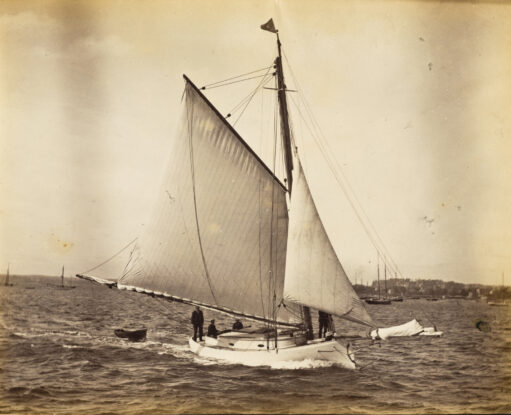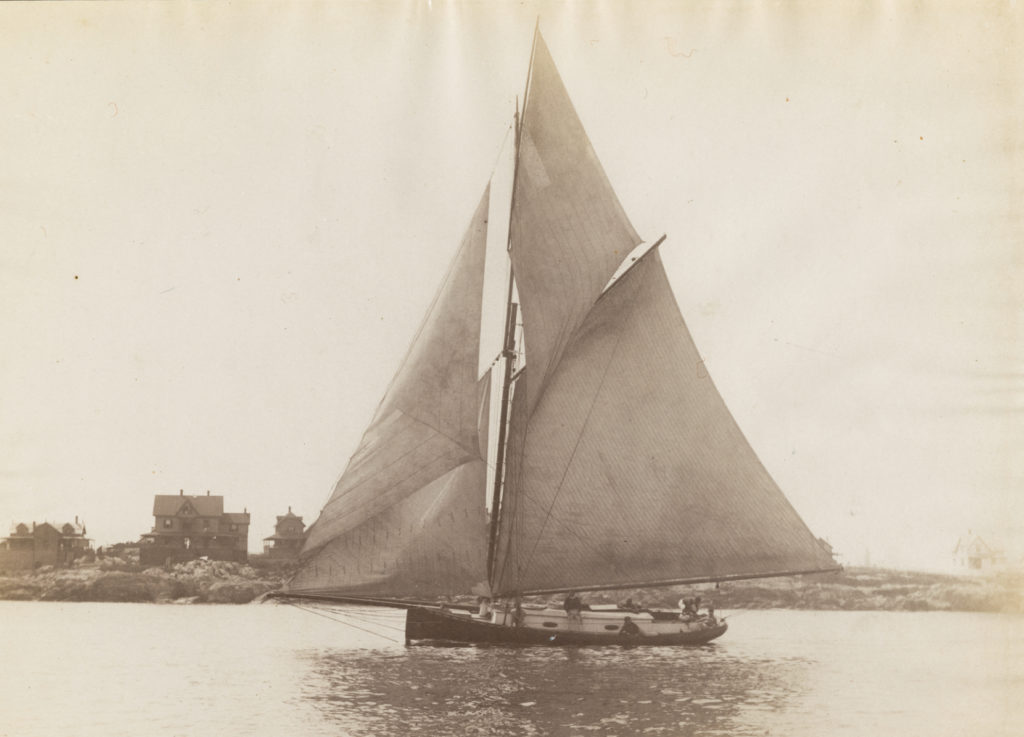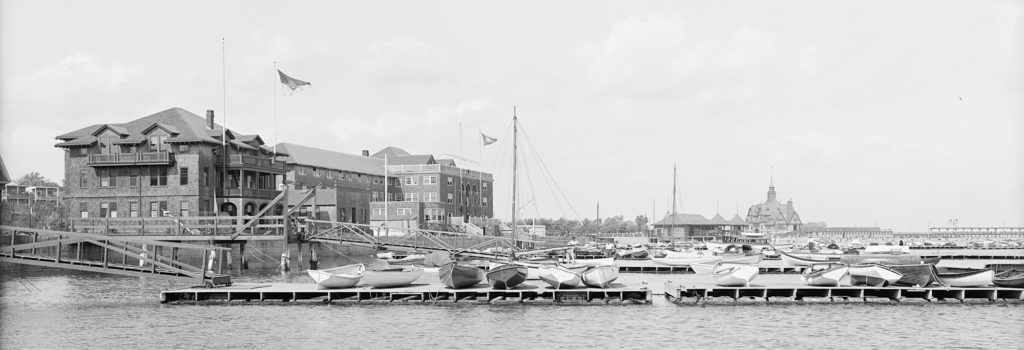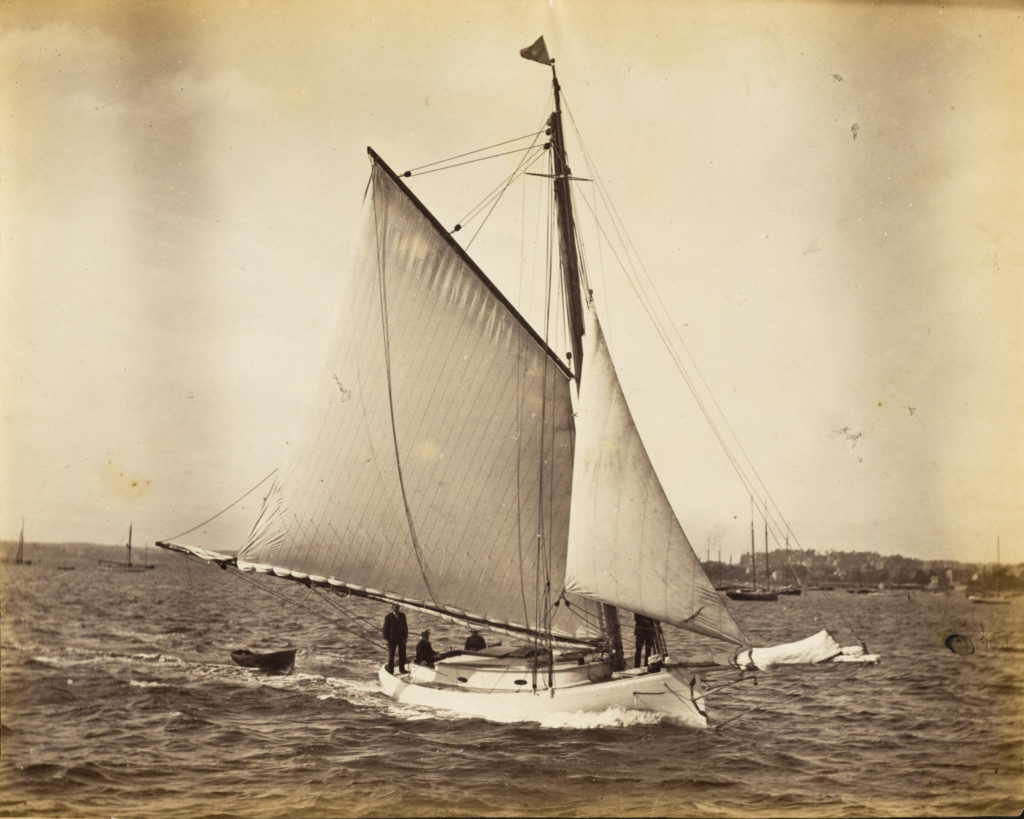April 20, 2020
Nathanael Herreshoff, Steam Engineer: The MIT Years (Part II)
What else did NGH get up to while he was a student at MIT in the 1860s, and how did his time there impact HMCo. afterwards? A second guest post by a friend of HMM

by Jim Giblin
If you haven't read Part I, you might want to start there!
A Calculating Yachtsman

Nathanael remained involved in sailing yachts and designing boats during his three years at MIT. He was invited to the first meeting of the Boston Yacht Club in November 1866 and was elected a member at the Club's second meeting that December. Dexter Stone - who for a short time had been a partner in Nathanael's brother John's boatbuilding business - was a founding member of the Club and later served as the Club's measurer. Eben Denton, the owner of VIOLET, modeled by Nathanael and built in 1866, was also a founding member. Both these men would certainly have been well aware of Nathanael's abilities as a helmsman and designer.
Soon after becoming a member, the Club asked Nathanael to develop a measurement formula and time allowance rules for handicapping the various sized yachts in their races. The resulting direct reading time allowance tables were first issued in 1867 and remained in wide use for well over a century. It is truly remarkable to think an 18-year-old college student was recognized as having the necessary mathematical skills and understanding of sailing yacht performance to be assigned such a task. Nathanael resigned from the Boston Yacht Club upon leaving MIT in1869 but was made an honorary member in 1877 and served as Rear Commodore in 1891.

An alternative theory about NGH’s job offer at Corliss being made through an MIT connection (discussed in Part I) comes from another account that states Nathanael became acquainted with George Corliss at the Boston Yacht Club. Although George Corliss does not appear to have been a member, it is certainly possible another Club member provided a recommendation or introduction which lead to a job offer.
Designing for the Family

While at MIT Nathanael continued modeling (designing) hulls for his brother John’s boatbuilding business and in the winter of 1867-68 modeled John's first steamer, the ANNIE MOISE (HMCo. #1). Nathanael may also have been responsible for her machinery arrangement, though none of those drawings appear to have survived. ANNIE MOISE’s engine and boiler were purchased from Wright & Smith of Newark, NJ. The steamer was launched on April 13, 1868 and trialed the following day. In May 1868 Nathanael modeled a steamer for Wright & Smith from which John later built two hulls. A drawing in the Haffenreffer-Herreshoff Collection at the MIT Museum of a two-bladed propeller for the ANNIE MOISE signed “Nathl Herreshoff” is dated February 19, 1869. (This is actually the earliest dated drawing in the Haffenreffer-Herreshoff collection!) NGH drew this plan while still in school but nearly a year after ANNIE MOISE’s launching, so it is possible this drawing represents a replacement propeller for the original. While Nathanael was at MIT both John and their father, Charles Frederick, continued to design and build an increasing number of boats for themselves and customers.


Nathanael spent the summers of his college years racing John's sloops CLYTIE and SADIE in both New York and Boston waters with great success. Nathanael had modeled CLYTIE in 1866 before beginning classes at MIT, while SADIE was modeled by his brother John.
The MIT influence at HMCo.
Three of Nathanael's sons would later attend MIT and all roomed at 64 Commonwealth Ave, a five-minute walk to MIT. The MIT alumni records indicate that after forming HMCo. with his brother in 1878, John and Nathanael hired several MIT mechanical engineering and naval architecture graduates. These would all have been graduates of the regular four-year program. Special students are not listed as alumni, but it is likely he also hired individuals who had attended as specials. The most notable of the MIT alumni to work at the HMCo. was George Owen, who would later become well known for his own yacht design work and even later as a professor of Naval Architecture at MIT himself. George Owen was particularly well known for his P, Q and R class racing yachts designed to Captain Nat's Universal Rule. His design collection is also a major collection within Hart Nautical at the MIT Museum today.
Jim Giblin is a retired mechanical engineer, independent researcher, and long-time friend and supporter of the Museum. He is based in Noank, CT.

